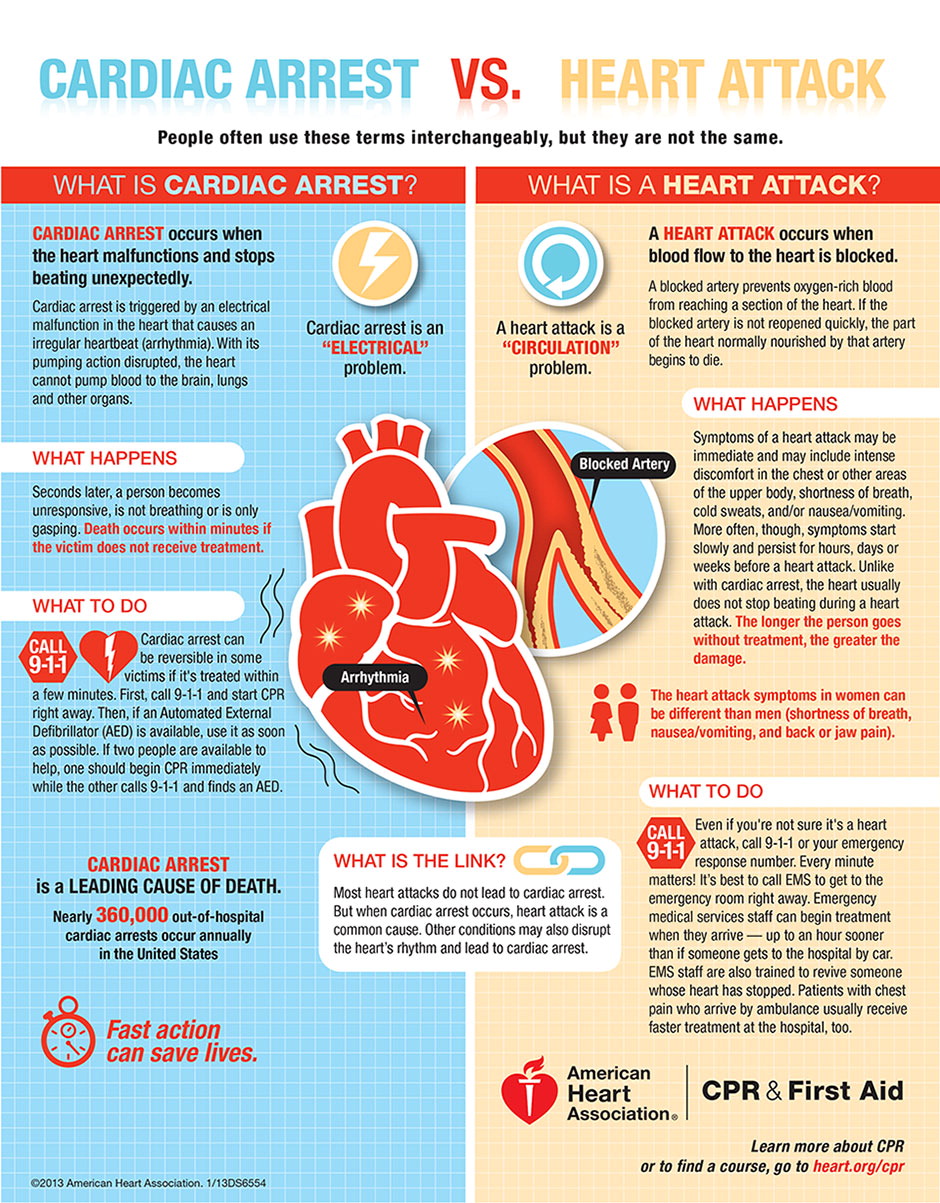Is It A Heart Attack, Cardiac Arrest Or Heart Failure?

HYANNIS – When it comes to heart disease, understanding the differences between heart attack, cardiac arrest and heart failure isn’t easy. To learn more, we talked to Hyannis cardiologist Claude-Laurent Sader, MD, FACC.
What is a Heart Attack?
A heart attack, or myocardial infarction, occurs when the blood flow to the heart muscle is disrupted or halted. This happens when the blood vessels supplying the heart with oxygen-rich blood become blocked from fatty plaques. The longer the artery is blocked, the greater the damage. The onset of symptoms can be sudden and intense. However, it can sometimes occur over the course of days or weeks, becoming more intense with time.
According to the American Heart Association, heart attacks account for 1 in 7 deaths in the United States each year.
“It is possible to survive a heart attack, but getting help quickly is imperative,” says Dr. Sader. “The more time that the heart is deprived of oxygen, the greater the chance of permanent damage or death.”
Anyone experiencing the following signs of a heart attack should call 911 immediately:
- Chest discomfort: uncomfortable pressure, squeezing, fullness or pain that comes and goes
- Upper body discomfort: pain or discomfort in one or both arms, back, neck, jaw or stomach
- Shortness of breath with or without chest discomfort
- Other signs: cold sweat, nausea or light headedness
Coronary artery disease (CAD) is the underlying condition most commonly associated with heart attack.
“Family history and lifestyle habits are the key contributors to developing coronary artery disease,” said Dr. Sader. “People with a poor diet, who are overweight and sedentary, are the most at risk. Smoking also increases the risk.”
Heart attack survivors can reduce their risk of future episodes by making lifestyle changes to reduce blood cholesterol and blood pressure.
“I get asked a lot about treatment, especially when it comes to medications. Patients want to know ‘am I going to have to take these the rest of my life?’ The answer is yes because none of these disease entities, once they damage the heart, are curable,” said Dr. Sader.
What is Cardiac Arrest?
According to the American Heart Association cardiac arrest is a leading cause of death. Each year, more that 320,000 people experience cardiac arrest in a non-hospital setting in the United States.
Cardiac arrest is a sudden cessation of heart function that usually comes without warning. It is most often caused by a malfunction of the heart’s electrical system, which disrupts the normal beating of the heart. Abnormal rhythm, especially ventricular fibrillation, can cause the heart to beat too fast or stop all together. Death occurs within minutes if a normal heartbeat is not restored.
“The most common risk factor is having a damaged heart – one where there was a previous heart attack,” said Dr. Sader
“Diseases that overwhelm the heart’s ability to function can also cause cardiac arrest,” he said, such as:
- Major organ failure
- Septic blood infections
- Severe dehydration
Cardiac arrest can happen after a heart attack or during recovery from one. People with heart disease are at higher risk for sudden cardiac arrest.
“People with a family history of cardiac arrest or conditions like hypertrophic cardiomyopathy, where a seemingly healthy person suddenly collapses while playing a sport, are also at risk. They should be under the watchful care of a cardiologist as soon as possible,” said Dr. Sader.
It is possible to reverse cardiac arrest, but it requires the quick use of a defibrillator to shock the heart back into rhythm. Automated external defibrillator (AED) devices are widely available in public places and are easy to use and can be administrated by any bystander.
What is Heart Failure?
Heart failure is a chronic and degenerative disease of the heart. Unlike cardiac arrest or heart attack, there is nothing sudden about its onset.
“Congestive heart failure requires immediate medical attention. Often the terms ‘heart failure’ and ‘congestive heart failure’ are used to mean the same thing,” said Dr. Sader.
There are more than 1.3 million people living in the U.S. today with heart failure, according to the American Heart Association.
Heart failure, in most instances, is a chronic disease that can be treated but not cured. According to the American Heart Association, it is caused when the heart is weakened or damaged by disease or from a previous heart attack. Circulation becomes compromised so that fluid, normally filtered through the kidneys, accumulates in the blood stream and becomes congested in the lungs and liver. Sometimes there is also swelling in the legs or around the eyes.
Some types of heart failureare reversible like the one caused by high blood pressure.
“When blood pressure is uncontrolled, the heart begins to fail under the strain of pumping against it. In this instance, treating the blood pressure may restore normal myocardial function,” said Dr. Sader.
Heart failure can happen at any age. The most common risk factor is having a damaged heart from a previous heart attack or a disease.
Other causes are:
- Kidney failure
- Lung failure
- Stoke
- Major infection like septicemia
Story Credit: http://www.capecod.com/newscenter/is-it-a-heart-attack-cardiac-arrest-or-heart-failure/


